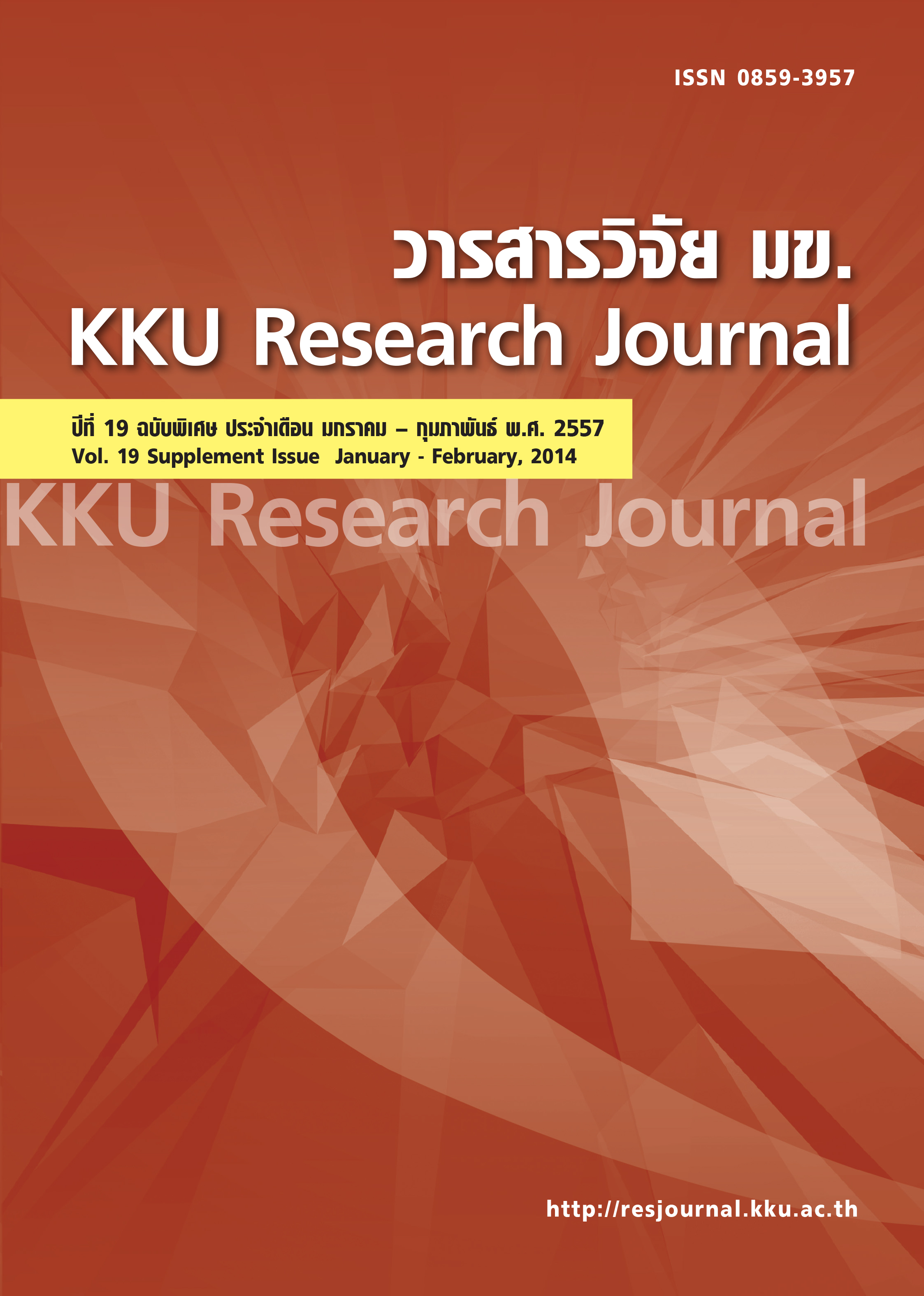Simultaneous saccharification and fermentation for lactic acid production from sweet potato
Main Article Content
Abstract
Simultaneous saccharification and fermentation (SSF) process has been employed in numerous of recent researches since it is an efficient process for the production of a wide range of valuable products. In our present research, sweet potato (SP) was converted into lactic acid by SSF process, which involved a liquefaction step with ?-amylase followed by the SSF step in which glucoamylase and lactic acid bacterial starter were incorporated. Optimal conditions for a hydrolysis of SP by ?-amylase were investigated using response surface methodology (RSM) with central composite design (CCD). SP was applied at 50% (w/v) in distilled water and incubation time was allowed for 90 min. The results suggested that 0.155% ?-amylase (% v/SP weight), 70oC incubation temperature, pH 6.5, and 0.75 g/L CaCl 2 were optimal for liquefaction of SP and the high concentration of reducing sugars at 60.32 g/L was predicted. Subsequently, the liquefied product was applied for lactic acid production using SSF process by a lactic acid bacterium, FAG 302, which was eventually identified as Lactobacillus sp. and optimum temperature was determined. From the results, optimal temperature for SSF step was selected at 34oC and 105.52 g/L lactic acid was yielded at 72 h.
Article Details
How to Cite
Adthalungrong, A., Adthalungrong, C., & Kumnil, P. (2017). Simultaneous saccharification and fermentation for lactic acid production from sweet potato. Asia-Pacific Journal of Science and Technology, 19, 116–124. retrieved from https://so01.tci-thaijo.org/index.php/APST/article/view/83109
Section
Research Articles


